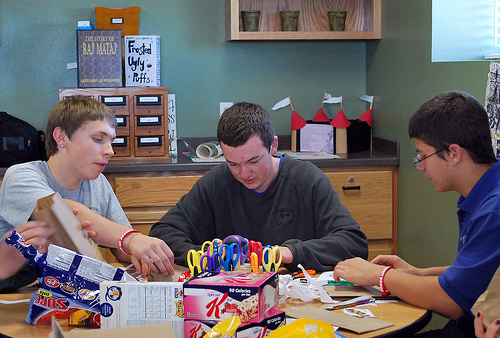
The Disorder Thats Driving 200 Million People Crazy
Written by Mark Sampson, Posted on , in Section Teens & Tweens
Anxiety has always been part of the human condition, with accounts of its various manifestations, including acute shyness and stage fright, dating all the way back to classical antiquity. Nonetheless, since the end of the Second World War, reported levels of anxiety have increased to an alarming degree. At the beginning of the 21st century, it may come to you as a surprise that, anxiety disorders constitute the most prevalent mental health problem around the globe, afflicting millions of people.
Anxiety disorders are very common in the community and yet there has been relatively little research focusing on them in comparison to other less common disorders, such as depression or bipolar disorder. Much of the most recent research rates anxiety disorders between 16.6% and 28.8% of the total population worldwide. Some authorities target the ever increasing pace and demands of modern life.
Why Is Anxiety Disorder Becoming More Common?
We live in a time of anxiousness. This generation of young adults are living in a time where stress and anxiety are greater than ever before. Why? Consider that only 15-20 years ago, the internet was in its infancy and only used by the high-tech savvy, and personal devices didn't exist at all. So the negative and sometimes stressful information out there in the world was being funneled through the nightly news (which wasn't exactly being watched by the youth of the world).
In contrast to “the old days”, consider the pressures experienced by today’s teens and what they’re exposed to. With the easy access to the information super-highway via their devices or personal computers, teens are staring into the face of the war on terror, changes in their government and their freedoms, the need to be “liked”, and the pressure to look a certain way. For the first time ever, survey data from the United States found anxiety disorder to have increased incidence with the female gender, younger age, and low income. Take a moment to wear the shoes of college aged kids. Many of today’s employees are disengaged from their jobs (upwards of 30%), students are debt-ridden, recent graduates are underemployed, and many struggle to cope with social isolation.
So What Does Anxiety Disorder Look Like?
Anxiety is an umbrella term that encompasses a number of related disorders. Generalized anxiety disorder (GAD) is the most common. Symptoms of GAD include increased heart rate, “jelly legs,” tingling in the hands and feet, hyperventilation, dizziness, feeling sick, tension headaches, hot flushes, and shaking (just to name a few, although anxiety manifests differently for different people). In addition, anxiety makes people think they’re going mad or that they’re about to lose control. They think they might die, or that they’re going to be sick.
Panic disorder, a condition characterized by periodic episodes of intense anxiety or terror (the dreaded panic attack). These can last from 15 to 30 minutes and can occur in nearly every other kind of anxiety disorder (though in those cases the attacks tend to be triggered by a specific event or cue). Symptoms include a rapid heartbeat, sweating, shakiness, shortness of breath, a fear of dying, and even a fear of going insane.
The other four major classifications of anxiety disorders include all phobic disorders (like the fear of flying, stage fright, and claustrophobia), post-traumatic stress disorder (PTSD), obsessive-compulsive disorder (OCD), and separation anxiety disorder. All these disorders can induce symptoms similar to Generalized Anxiety Disorder.
Some people are simply more vulnerable to stress, whether it be on account of biological or socially-learned predispositions. Serotonin is particularly important to feelings of well-being; deficiencies are highly related to anxiety and depression. It’s important to know that Anxiety is real and parents should educate themselves with what it is, what it looks like, and ultimately how to get help. Especially if a child is experiencing a “failure to launch.”
